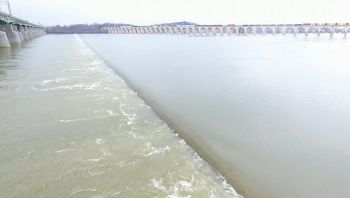Low Head Dams

|
| Due to the problematic hydraulic conditions caused by Dock Street Dam in Harrisburg, Pennsylvania, there have been over 30 documented fatalities at the site since 1935.
(Image Source: DamFailures.org) |
Many of the most dangerous dams are not the massive concrete structures people often picture when thinking of dams. Many are low-head dams, also called run-of-the-river dams or "drowning machines". Low-head dams are characterized by their low height – usually with a one foot to fifteen foot drop off – that allows water to flow over the top of the dam. Below the surface, the water falling over the dam creates highly aerated, circulating currents that trap people and objects underwater against the face of the dam. These forces are a practically inescapable trap for even the strongest, life jacket-clad swimmers. Boats and kayak are commonly capsized in such conditions as well. Research conducted by the late Dr. Bruce Tschantz shows that between 1980 and 2016, there have been more than nine times the number of fatalities that have occurred at dams than have occurred due to dam failures.
Low-head dams have a variety of purposes, including hydroelectric power generation, irrigation control, and historically, powering mills. While some dams no longer are needed to serve their original purposes, many others across the United States are still important components of our national water infrastructure. These types of structures have also commonly been referred to as check dams or diversion dams.
Examples
![]() Learn more about the dangers of low head dams like Dock Street Dam (DamFailures.org)
Learn more about the dangers of low head dams like Dock Street Dam (DamFailures.org)
Trainings
![]() On-Demand Webinar: Identifying Hazards and Improving Public Safety at Low Head Dams
On-Demand Webinar: Identifying Hazards and Improving Public Safety at Low Head Dams
Revision ID: 7304
Revision Date: 07/18/2023
